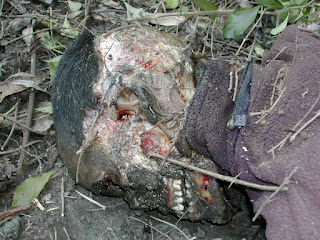A.D.D. (GRAPHIC!!)
Believe it or not the weather’s effect on body decomposition
is a huge part in determining a time of death. One tool that the Medical
Examiners will use in determining an approximate day of death is accumulated
degree days. Accumulated degree days (ADD) are calculated by taking the max and min
temperatures for each day and dividing by 2 to get your average temperature.
This is then used by the examiners to assist in figuring out the death day.
This will give them a good idea of the weather that the body way exposed too
while it was decomposing. If one was to find a body in skeletonization, they
could assume that it has been sitting out in the elements for months before it
reached that phase. But in reality, if they take into consideration the
accumulated degree days, they could in fact find out that the average daily
temperature the body was exposed to was around 100 degrees, and determine the
day of death was only 4 weeks prior. Since
we know how crucial an accurate time of death is in any investigation, it
really highlights the importance of knowing the climates effect on the body.
References
Megyesi, M., Haskell, N., & Nawrocki, S. (2004).
Using Accumulated Degree-Days to Estimate the Postmortem Interval from
Decomposed Human Remains. Journal of Forensic Science , Volume 50,
Issue 3.



Comments
Post a Comment